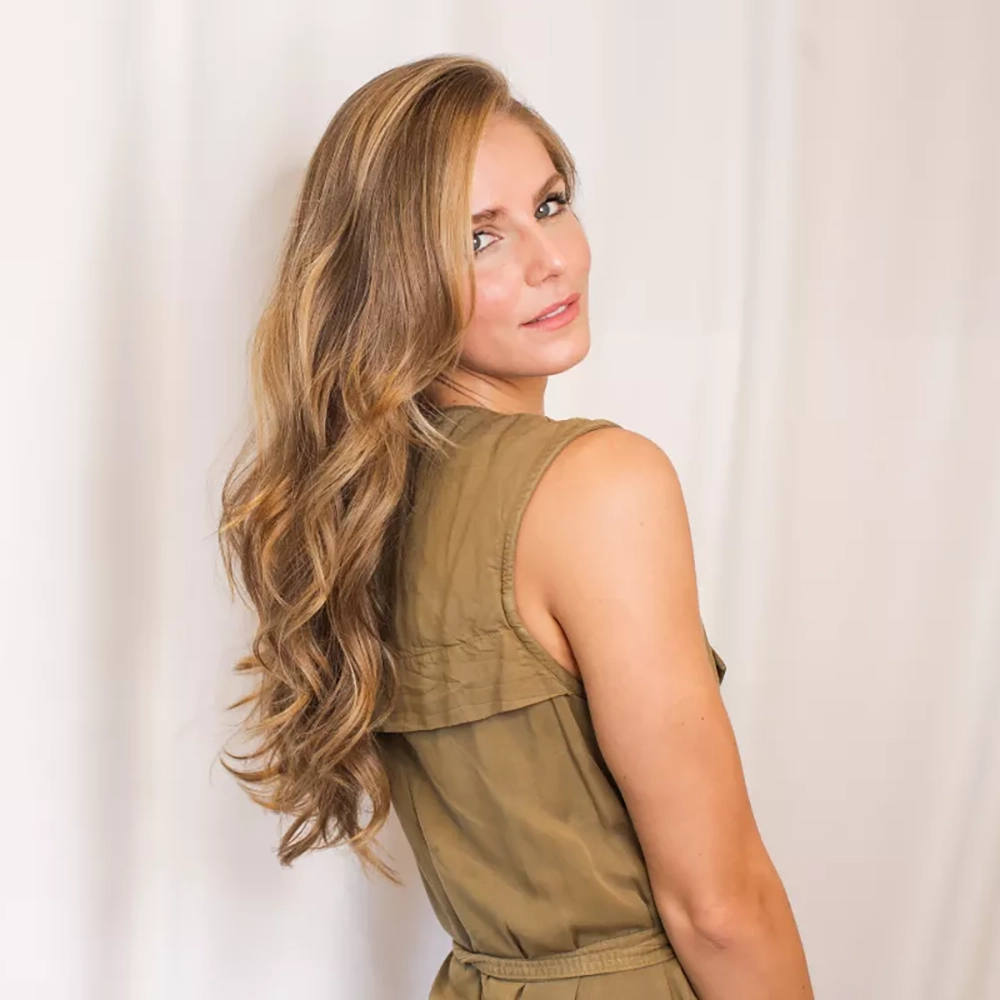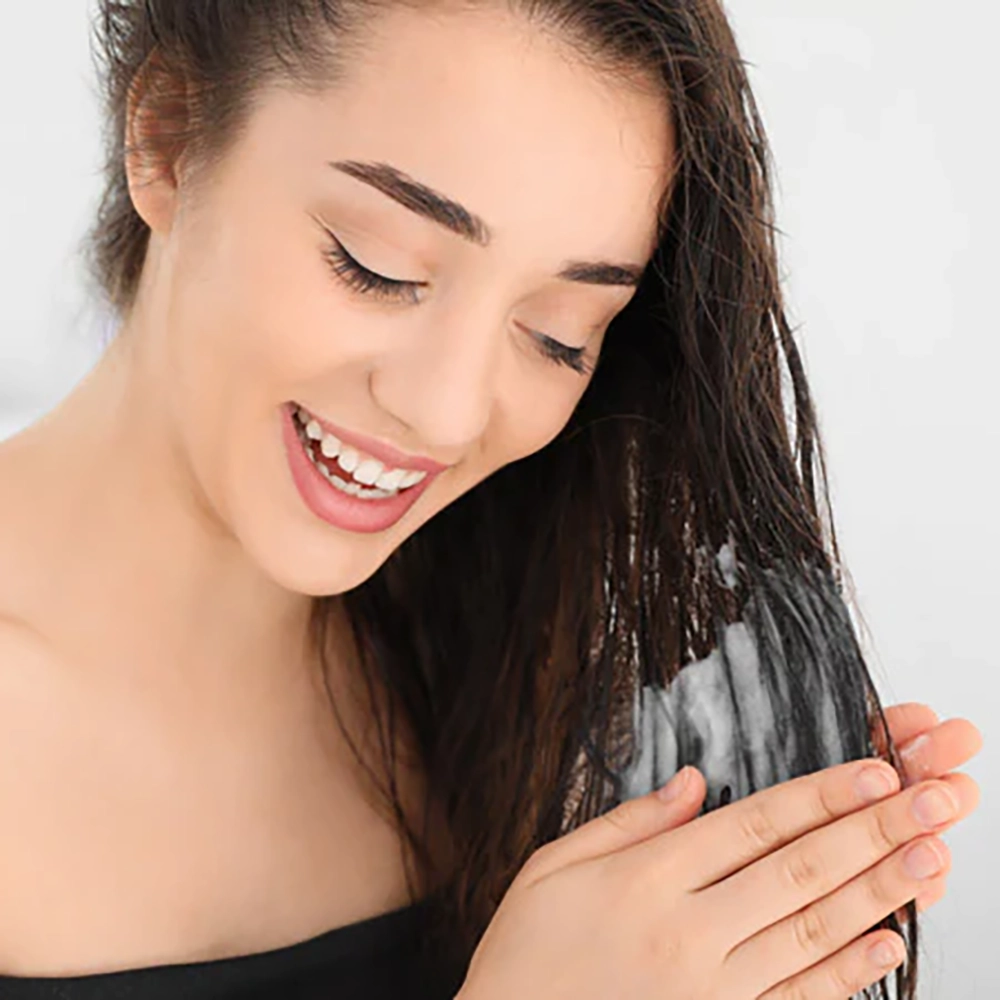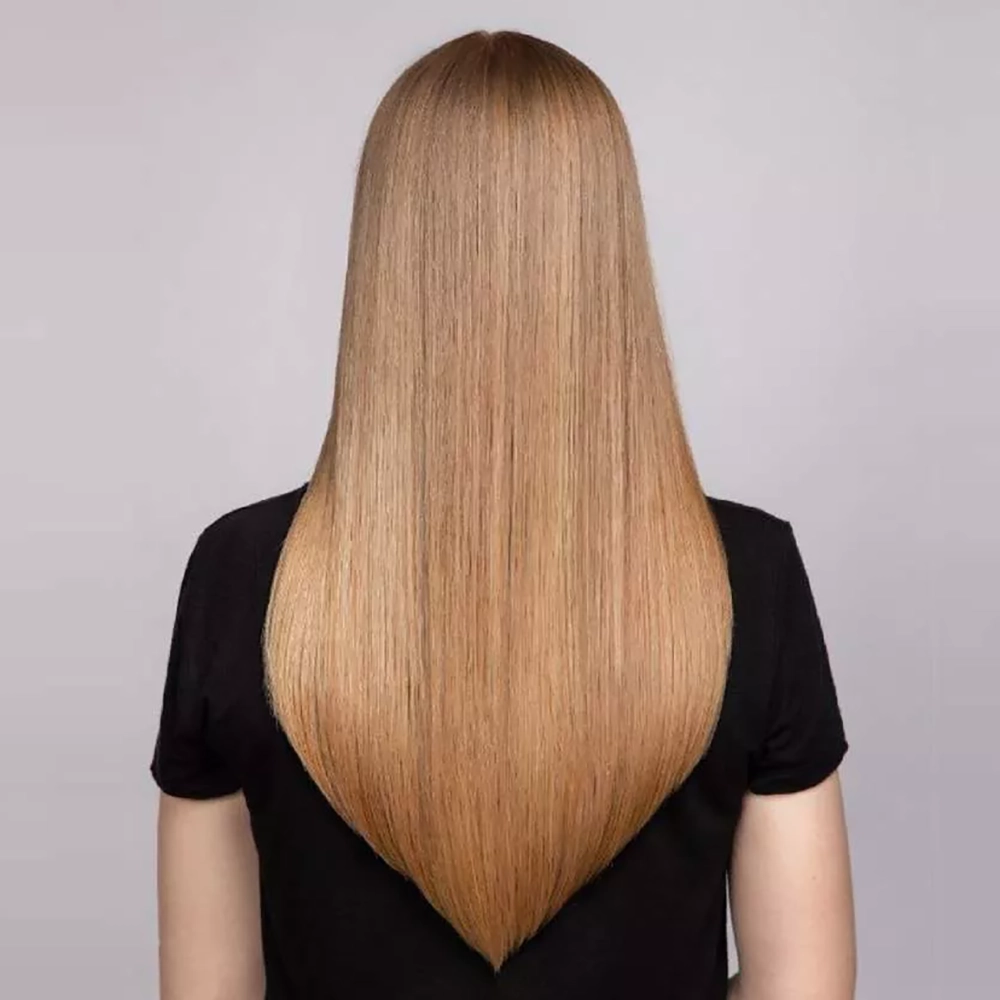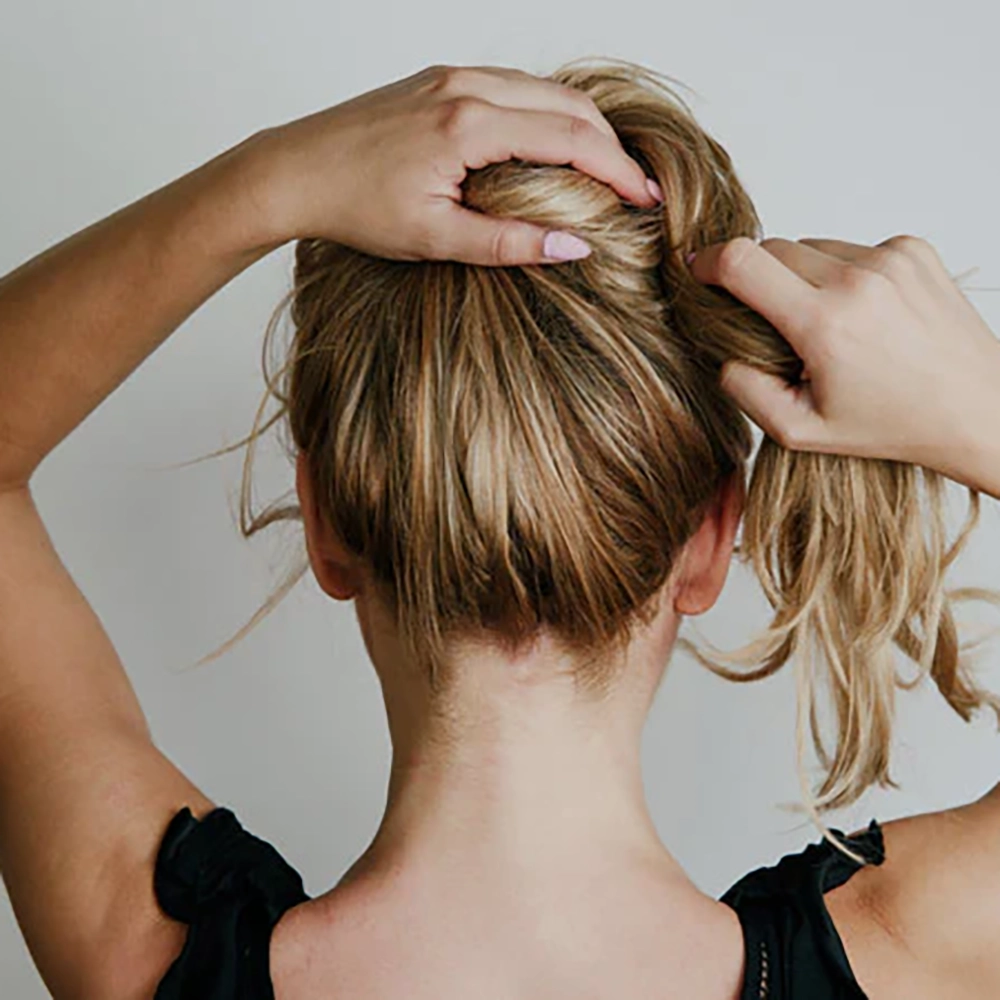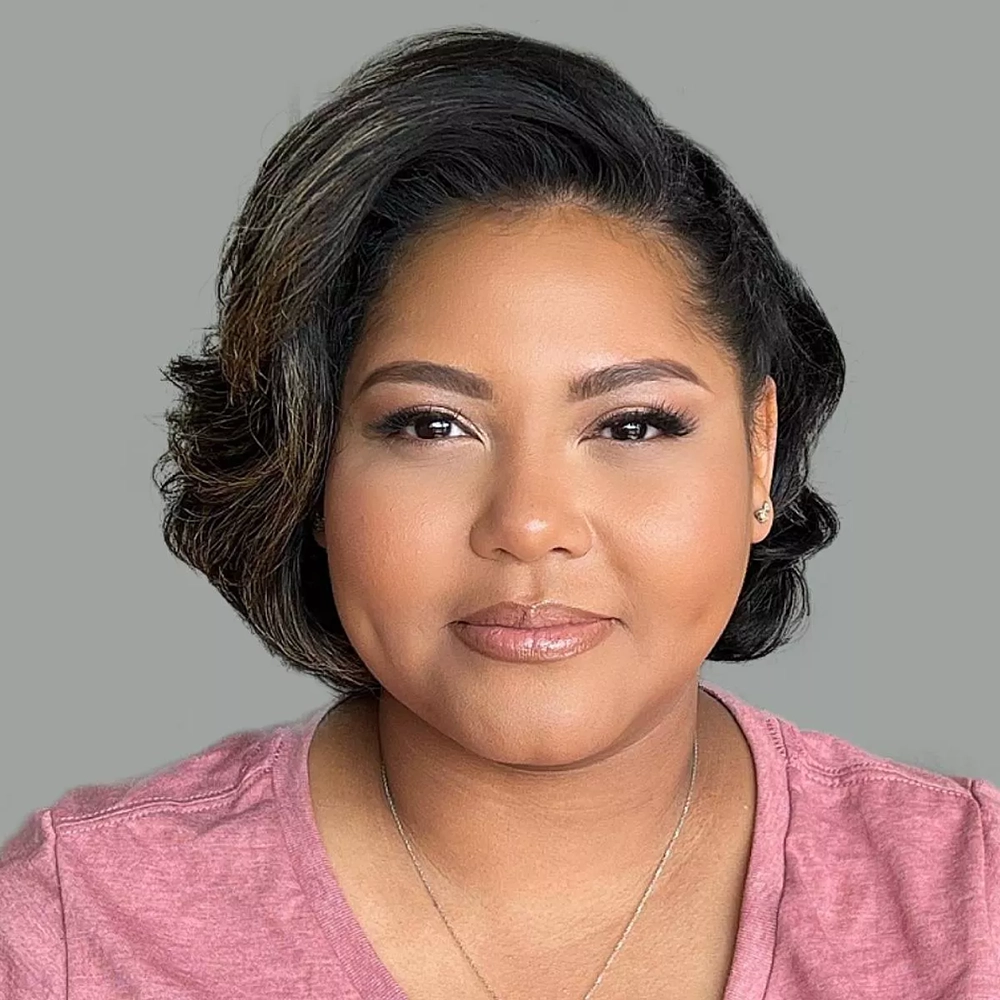Defining hair length categories
When it comes to discussing hair length, it’s important to have a clear understanding of the different categories that exist. Defining hair length can help individuals communicate their desired hairstyle to their hairstylist more effectively. Additionally, it can aid in understanding various hair care tips, products, and hairstyles that work best with specific hair lengths. Below, we will explore the three main categories of hair length: short, medium, and long.
Short hair:
Short hair refers to any hair length that falls above the shoulder. This category includes pixie cuts, bobs, and similar styles. Short hair can be both chic and low-maintenance, making it a popular choice for many individuals. Styling options for short hair include sleek and straight looks, textured waves, or even edgy spikes for those who dare to experiment.
Medium hair:
Medium hair falls between the short and long hair categories. It typically reaches the shoulders or extends slightly below them. This versatile length allows for various styling options, ranging from loose curls to updos. Medium hair is known for its easy manageability and suitability for different face shapes.
Long hair:
Long hair is characterized by hair that extends past the shoulders. It can range from mid-back length to hair that reaches the waist or even longer. Long hair offers endless possibilities for styling, from elegant braids to intricate updos. However, it requires extra care and maintenance to keep it healthy and prevent issues such as split ends.
Conclusion:
Understanding the different categories of hair length is essential for effective communication and proper hair care. Whether you prefer the convenience of short hair, the versatility of medium hair, or the elegance of long hair, knowing where your hair falls on the length spectrum allows you to make informed decisions about your style. Remember to choose hairstyles, products, and maintenance routines that suit your hair length to ensure healthy and beautiful hair.
List of hair length categories:
| Category | Length |
|---|---|
| Short hair | Above the shoulder |
| Medium hair | Shoulder length or slightly below |
| Long hair | Past the shoulders |
Determining factors for long hair
When it comes to achieving long and luscious locks, there are several determining factors that play a significant role. From genetics to hair care routines, these factors contribute to the overall length and health of your hair. Understanding these factors can help you better understand how to promote hair growth and maintain long hair.
1. Genetics: Your genetics have a major influence on your hair length. The rate at which your hair grows is predetermined by your DNA. Some individuals are genetically predisposed to have faster hair growth, while others may have slower growth patterns.
2. Hair Care: The way you care for your hair can greatly impact its length. Regularly trimming your hair to eliminate split ends and breakage is crucial for maintaining long hair. Additionally, using gentle hair care products and avoiding excessive heat styling can help prevent damage and breakage, allowing your hair to grow longer.
3. Diet and Lifestyle: Your overall health and lifestyle choices can also affect the length and quality of your hair. A balanced diet rich in essential nutrients, such as proteins, vitamins, and minerals, promotes healthy hair growth. Additionally, maintaining a healthy lifestyle, including regular exercise, hydration, and stress management, contributes to overall hair health.
By understanding these determining factors, you can make informed choices when it comes to caring for your hair and promoting its growth. Remember, patience is key when trying to achieve long hair, as it takes time for your hair to grow. Following a consistent hair care routine and adopting a healthy lifestyle can help you reach your hair length goals.
In summary, determining factors for long hair include genetics, hair care practices, and diet/lifestyle choices. Paying attention to these factors and making conscious choices can help you achieve and maintain the long, beautiful hair you desire. Remember to be patient and consistent in your hair care routine, and soon you’ll be flaunting those gorgeous locks.
Hair growth rate and length milestones
The rate at which hair grows can vary from person to person. Some individuals are blessed with fast-growing hair that seems to always be reaching new length milestones, while others may find that their hair grows at a slower rate. Understanding the hair growth rate and the milestones associated with different lengths can be helpful in setting realistic expectations for achieving long hair goals.
First and foremost, it’s important to note that on average, hair grows about half an inch (1.25 cm) per month. This means that in a year, hair can grow about 6 inches (15 cm). However, this is an average estimation, and many factors can influence the rate of hair growth.
One of the main determining factors for hair growth rate is genetics. Just like other physical features, hair growth patterns can be inherited from our parents. If your parents have fast-growing hair, it’s likely that you’ll also have a higher hair growth rate. On the other hand, if your family members tend to have slow-growing hair, you may have a similar experience.
- Diet: Proper nutrition plays a crucial role in hair growth. A diet rich in vitamins, minerals, and proteins can promote healthy hair growth. Foods such as salmon, eggs, spinach, nuts, and sweet potatoes are known to be beneficial for hair health.
- Hormonal factors: Hormonal changes can also impact hair growth rate. For example, during pregnancy, many women experience increased hair growth due to hormonal fluctuations. On the other hand, certain medical conditions or imbalances can lead to hair loss or slower hair growth.
- Hair care and maintenance: Proper hair care practices contribute to maintaining optimal hair health and growth. Regular washing, conditioning, and minimizing heat and chemical damage can help prevent breakage and promote healthy hair growth.
- Age: As we age, our hair growth rate tends to slow down. This is a natural part of the aging process, and while it can be frustrating, it’s important to understand that it’s a normal occurrence.
When it comes to length milestones, it’s essential to understand that hair growth is not a linear process. Different individuals may reach their desired lengths at different times, and it can take longer for some people to achieve specific milestones. However, there are some general benchmarks that can provide an idea of what to expect.
| Hair Length | Milestone |
|---|---|
| Shoulder Length | Typically, it takes about 6 to 8 months to grow hair to shoulder length. |
| Mid-Back Length | Reaching mid-back length usually takes around 1 to 2 years. |
| Waist Length | Achieving waist length hair can take approximately 3 to 4 years. |
| Classic Length | Classic length hair, which is often seen as the epitome of long hair, usually takes around 5 to 6 years to grow. |
Remember, these estimations are approximate and can vary depending on individual factors. The most important thing is to enjoy the journey of hair growth and take good care of your hair along the way.
Cultural perceptions of long hair
Long hair has been associated with beauty and femininity across different cultures and time periods. Cultural perceptions of long hair vary, with some societies valuing long hair as a symbol of attractiveness and youth, while others view it as a symbol of religious or spiritual significance. In this blog post, we will explore the different cultural perceptions of long hair and how it has influenced beauty standards and societal norms.
In many cultures throughout history, long hair has been seen as a symbol of femininity and beauty. Women with long, flowing locks have often been depicted in art, literature, and mythology as ethereal and desirable. For example, in ancient Greece, long hair was highly valued, and women took great pride in their elaborate hairstyles. Similarly, in many Native American cultures, long hair is considered a sacred part of a woman’s identity and is often worn in intricate braids or styles.
However, cultural perceptions of long hair can also be influenced by religious or spiritual practices. In some cultures, long hair is associated with spirituality and is seen as a way to connect with the divine. For instance, in Sikhism, long hair is considered a gift from God and is an important part of the Sikh identity. Sikh men and women keep their hair uncut and often tie it up in a turban or cover it with a headscarf as a symbol of their faith.
- The association of long hair with beauty and femininity
- The significance of long hair in different cultures
- The influence of religious and spiritual beliefs on cultural perceptions of long hair
| Culture | Cultural Perception of Long Hair |
|---|---|
| Ancient Greece | Symbol of beauty and femininity |
| Native American | Sacred and intricate hairstyles |
| Sikhism | Gift from God and important religious symbol |
Hairstyles that work best with long hair
When it comes to long hair, the styling options are endless. Whether you prefer sleek and sophisticated or bohemian and tousled, there are countless hairstyles that work best with long hair. One of the most versatile hairstyles for long hair is the classic ponytail. Not only does it keep your hair off your face and neck, but it also adds a touch of elegance to any look. To create a sleek and polished ponytail, start by brushing your hair back and securing it with an elastic band. For a more casual and effortless look, try a high ponytail with some loose strands framing your face.
Another hairstyle that complements long hair is the braided crown. This romantic and feminine style is perfect for special occasions or a boho-inspired look. To achieve this hairstyle, start by parting your hair down the middle and creating two equal sections. Take a small section from one side and begin braiding, adding small sections of hair as you go. Repeat on the other side and secure the braids at the back of your head with bobby pins. For a softer and more relaxed look, gently pull on the braids to loosen them and create a fuller appearance.
For those with thick and voluminous long hair, a layered cut can work wonders. Layered hairstyles add movement and dimension to your locks, making them appear lighter and more manageable. Whether you opt for long layers or shorter choppy layers, this style can be customized to suit your preferences and face shape. Pair your layered cut with loose waves or curls for a soft and romantic look. To enhance the texture and hold of your curls, apply a styling product before using a curling iron or wand to create natural-looking waves.
In addition to ponytails, braided crowns, and layered cuts, there are many other hairstyles that work best with long hair. Half-up half-down styles, top knots, and fishtail braids are all popular choices for those with long locks. Experiment with different styles and find the ones that make you feel confident and beautiful. Remember to use heat protectant products and practice proper hair care to keep your long locks healthy and vibrant. With the right hairstyle, you can showcase the beauty and versatility of long hair.
List of Hairstyles that Work Best with Long Hair:
- Classic ponytail
- Braided crown
- Layered cut with loose waves
- Half-up half-down style
- Top knot
- Fishtail braid
Table of Contents:
| 1. Hairstyles that work best with long hair | 2. List of hairstyles |
| 1.1 Classic ponytail | 2.1 Classic ponytail |
| 1.2 Braided crown | 2.2 Braided crown |
| 1.3 Layered cut with loose waves | 2.3 Layered cut with loose waves |
| 1.4 Half-up half-down style | 2.4 Half-up half-down style |
| 1.5 Top knot | 2.5 Top knot |
| 1.6 Fishtail braid | 2.6 Fishtail braid |
Maintenance tips for long hair
When it comes to maintaining long hair, there are certain tips and tricks that can help keep your locks healthy and beautiful. Proper hair care is essential for preventing damage, breakage, and split ends. Here are some maintenance tips for long hair:
1. Regular Trimming: Even though it may seem counterintuitive, getting regular trims can actually help your hair grow longer. Trimming the ends of your hair every 6-8 weeks prevents split ends from traveling up the hair shaft, which can lead to breakage and stunted growth.
2. Gentle Washing: Washing your hair too frequently or with harsh shampoo can strip away its natural oils, leaving it dry and brittle. Opt for a gentle shampoo and wash your hair 2-3 times a week to maintain its natural moisture balance.
3. Deep Conditioning: Long hair tends to be more prone to dryness, so using a deep conditioner once or twice a week can help restore moisture and improve manageability. Look for a conditioner specifically designed for long hair and leave it on for a few minutes before rinsing.
4. Proper Brushing: To avoid breakage, use a wide-toothed comb or a brush with natural bristles to gently detangle your hair. Start from the ends and work your way up to the roots, being careful not to pull or tug on knots.
5. Protection from Heat: Excessive heat from styling tools like blow dryers, straighteners, and curling irons can cause damage to your hair. Before using these tools, apply a heat protectant spray and use them on the lowest heat setting possible.
6. Minimize Manipulation: Constantly tying your hair up in tight ponytails or buns can lead to breakage and even hair loss. Give your hair a break and let it down whenever possible. When you do tie it up, use hair-friendly accessories like scrunchies or elastic bands without metal clasps.
7. Protect from Environmental Factors: Exposure to sun, wind, and pollution can also take a toll on your hair. Consider wearing a hat or using a hair serum with UV protection when spending time outdoors. Additionally, rinse your hair with clean water after swimming in chlorinated pools or saltwater.
By following these maintenance tips for long hair, you can keep your tresses healthy, shiny, and beautiful. Remember, consistency is key when it comes to hair care, so make these practices a part of your regular routine.
List of Maintenance Tips for Long Hair:
- Regular Trimming
- Gentle Washing
- Deep Conditioning
- Proper Brushing
- Protection from Heat
- Minimize Manipulation
- Protect from Environmental Factors
Table: Recommended Hair Care Products for Long Hair
| Product | Description |
|---|---|
| Gentle Shampoo | A sulfate-free shampoo that cleanses without stripping away natural oils. |
| Deep Conditioner | A nourishing conditioner that hydrates and restores moisture to long hair. |
| Wide-Toothed Comb | A comb with wide gaps between teeth to minimize breakage while detangling. |
| Heat Protectant Spray | A spray that forms a protective barrier between hair and heat styling tools. |
| Hair Serum with UV Protection | A serum that shields hair from the damaging effects of the sun’s rays. |
Transitioning from short to long hair
Transitioning from short to long hair can be an exciting and transformative process. Whether you are looking to grow out a pixie cut or add length to a bob, there are several factors to consider when making this transition. It requires patience and a proper hair care routine to ensure the health and growth of your hair. In this blog post, we will discuss tips and tricks to effectively transition from short to long hair.
One of the determining factors for successful hair growth is proper hair care and maintenance. It is essential to keep your hair clean, well-nourished, and protected to promote healthy growth. Regular shampooing and conditioning is vital to keep your scalp and hair follicles clean and moisturized. Use a gentle shampoo and conditioner that suits your hair type and avoid harsh chemicals that can strip the natural oils from your hair. Consider using a wide-toothed comb or a detangling brush to prevent breakage when combing wet hair.
Another crucial aspect to consider when transitioning to long hair is frequent trims. It may seem counterintuitive, but getting regular trims every 8-12 weeks will actually help your hair grow longer and healthier. Trimming the ends of your hair helps to prevent split ends and breakage, allowing for more rapid and even growth. While it may be tempting to skip the trim to preserve length, it will only result in uneven and damaged hair that takes longer to grow.
In addition to proper care and maintenance, there are several hairstyles and techniques that can aid in the transition process. For shorter hair lengths, consider using styling products such as mousse or texturizing spray to add volume and create the illusion of longer hair. Experiment with braids, ponytails, and updos to keep your hair off your face and minimize the appearance of awkward lengths during the transition phase. As your hair grows, you can gradually move on to more intricate hairstyles that work best with long hair, such as half-up half-down styles, buns, and loose waves.
- Be patient: Growing out your hair takes time, and it won’t happen overnight. Embrace the journey and be patient with your hair’s growth process.
- Eat a balanced diet: Proper nutrition plays a vital role in hair health. Include protein-rich foods, fruits, vegetables, and healthy fats in your diet to promote hair growth.
- Protect your hair: Avoid excessive heat styling and minimize the use of harsh hair products that can damage your hair. Consider using heat protectants and silk or satin pillowcases to protect your hair while sleeping.
- Stay hydrated: Drinking an adequate amount of water daily helps to keep your hair and scalp hydrated, promoting hair growth.
Transitioning from short to long hair requires dedication and proper care. By following these tips and incorporating them into your hair care routine, you can make the process smoother and achieve the long and luscious locks you desire. Remember to be patient, embrace the journey, and enjoy the versatility that comes with longer hair!



